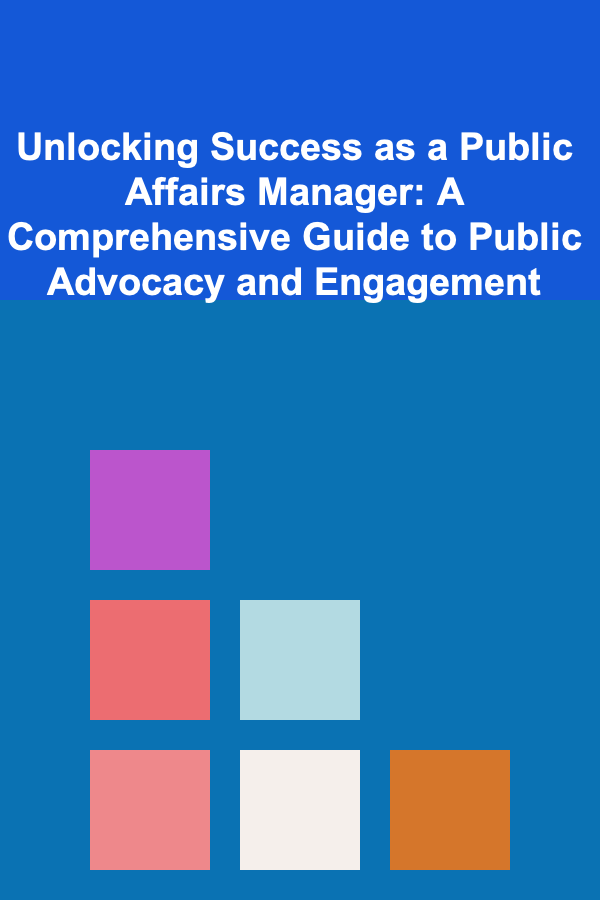
10 Tips for Writing Prompts Centered Around Specific Settings
ebook include PDF & Audio bundle (Micro Guide)
$12.99$7.99
Limited Time Offer! Order within the next:
Not available at this time

In creative writing, setting is more than just the backdrop of a story---it's an active, dynamic part of the narrative that can shape character development, plot, and mood. Whether you're crafting a world of high fantasy, a gritty dystopia, or a quiet suburban town, the setting can influence every element of the story. Writing prompts that focus on specific settings can serve as a powerful tool to spark creativity, improve your storytelling skills, and help you explore new worlds in your writing.
In this article, we'll explore 10 tips for writing prompts that center around specific settings. These tips can help you delve deeper into your settings, making them feel immersive, alive, and integral to your story.
Start with Sensory Details
When creating a prompt based on a specific setting, think about how you can engage the senses. How does the place look, sound, smell, taste, and feel? Sensory details can breathe life into your writing by giving readers a full experience of the world you're describing. Try to draw inspiration from specific elements of your setting that evoke sensory experiences.
Example prompt:
- "Write about a character standing in the middle of a bustling market on a hot summer day. The sun beats down, the air is thick with the scent of fresh fruit and spices, and the cries of street vendors mix with the hum of a distant parade. How does your character react to the sensory overload around them?"
The key here is to create an environment that pulls your reader in, using sensory details to make them feel like they are physically present in the scene.
Use the Setting to Reflect Character Mood
The environment around a character can reflect their emotional state or internal conflict. A dark, stormy night could mirror a character's troubled mind, while a bright, sunny meadow might highlight a moment of peace or joy. Think about how the setting can align with or contrast a character's feelings.
Example prompt:
- "A character finds themselves in an empty, abandoned amusement park. The rusted rides creak in the wind, and the only sound is the distant whistle of a broken-down carousel. How does the setting mirror the character's emotional state after a recent breakup?"
By connecting setting to character mood, you add an extra layer of depth to both your characters and your story. The setting becomes a mirror for the character's inner world.
Create a Backstory for Your Setting
Instead of simply describing a place, consider how it came to be. Does the setting have a rich history? Was it once thriving, now abandoned, or is it a place of great importance? Think about the events that have shaped this setting, and let that history seep into the atmosphere.
Example prompt:
- "The town square once hosted grand festivals, but now it's overrun by weeds, and the fountain has run dry. Write about a character who returns to their childhood home after many years and reflects on how the town has changed."
When you build a backstory for your setting, it takes on an additional layer of meaning, and that can influence the characters' actions and decisions within it.
Make the Setting a Character
Sometimes, the setting itself can be an integral part of the story. A setting can feel like an active participant, whether it's a haunted house that shapes the events or a dystopian world that exerts control over the characters. In these cases, the setting almost becomes a character in its own right---one that can influence or challenge the characters.
Example prompt:
- "Write a story about a character who wakes up in a house where the walls are always shifting. No room stays in the same place for long, and the character must navigate the changing corridors to escape. What challenges does the setting present, and how does the character respond?"
By giving your setting personality or agency, you turn it into something more than just a backdrop---it becomes a central force in the story.
Focus on Time of Day or Season
The time of day or the season can completely alter the mood of your setting. The light, temperature, and atmosphere shift depending on when the scene is set. Experiment with how the same physical location can change under different circumstances, and use those changes to shape your narrative.
Example prompt:
- "It's late at night in a small, quiet town, and your character is walking home through the snow-covered streets. The streetlights flicker as they pass the abandoned church, and a low fog begins to roll in. What do they think about as they make their way home, and how does the time of night affect the way they view their surroundings?"
The time and season can make the setting feel more alive, changing the perception of the world your characters inhabit.
Build a Unique World or Culture Around the Setting
If your prompt centers around a fictional or fantastical world, create a unique culture or set of customs for that environment. Think about how the setting influences the people who live there---their way of life, their customs, and how they interact with the environment.
Example prompt:
- "In a kingdom where the weather is controlled by a mysterious council, the people have a strict system for how weather is distributed. One character, who lives in a place that's been in perpetual drought for years, seeks to challenge the council's control. How does the setting influence their mission?"
This prompt encourages you to build a society with its own rules and structures, creating a rich setting that is essential to the conflict or character development.
Consider Conflict Embedded in the Setting
Your setting can be a source of tension or conflict. Whether it's a dangerous wilderness, a city rife with political unrest, or a post-apocalyptic wasteland, the setting can pose threats to the characters or contribute to a larger conflict in the story.
Example prompt:
- "Your character is stranded in a remote desert after their vehicle breaks down. They have minimal supplies, and the sun is relentless. The only help comes from a strange figure who appears out of the sandstorm, but is this person a friend or foe?"
The conflict embedded within the setting creates immediate stakes for the characters, forcing them to act or make decisions that are influenced by their surroundings.
Let the Setting Evolve with the Plot
Settings can evolve alongside the plot, changing in response to the events of the story. Whether it's a town that's slowly being overtaken by nature, a city in the midst of a rebellion, or a spaceship drifting toward a black hole, allow the setting to transform as your characters progress through the narrative.
Example prompt:
- "A small coastal village is suddenly invaded by creatures from the deep sea. The peaceful town, which once thrived on fishing, now faces the threat of destruction. As the creature's attack intensifies, the village's landscape changes, affecting the residents' lives and relationships. How do the villagers adapt as the setting around them shifts?"
By tying the setting's evolution to the plot, you create a dynamic world that reacts to the characters' choices and actions.
Use Setting to Create Atmosphere
Atmosphere is key to setting the tone of your story. Whether you're writing horror, romance, or adventure, the setting can set the stage for the emotions you want to evoke. Think about how different settings influence mood and how you can use them to heighten suspense, wonder, or dread.
Example prompt:
- "A character enters an abandoned hospital late at night. The floors creak beneath their feet, and distant echoes seem to whisper their name. The setting should evoke a sense of unease, but what happens when the character finds something they didn't expect?"
A carefully crafted setting can heighten emotions and amplify the central themes of your story, making it an integral part of the atmosphere.
Play with Contrasts and Juxtapositions
Contrast is a powerful tool for creating tension, highlighting key themes, and adding complexity to your settings. Consider how contrasting elements---like the peacefulness of a rural countryside versus the chaos of an urban landscape---can underscore the stakes of your story.
Example prompt:
- "A character arrives in a futuristic city that is shiny and perfect on the surface, but below the surface, a massive underclass struggles to survive in the shadows. Write about how the character navigates between these two worlds, using the contrast in setting to show the disparities in society."
The juxtaposition between settings can emphasize character struggles or societal conflicts, enriching the narrative.
Conclusion
In writing, setting is more than just a backdrop---it can shape the narrative, influence characters, and reflect themes. By focusing on specific settings in your writing prompts, you invite new possibilities for storytelling. Sensory details, emotional connections, history, conflict, and atmosphere all play a role in bringing a setting to life, making it an essential part of your creative process. These 10 tips are just a starting point to explore how you can use settings to enrich your writing and inspire new ideas.
Whether you're crafting a new world or writing about the familiar, the setting will always be one of the most powerful tools you can wield in your storytelling arsenal.

How to Choose the Right Lighting to Set the Mood for Your Party
Read More
How to Leverage Partnerships and Sponsorships for Events
Read More
How to Make Extra Income by Working Part-Time as a Courier: An Actionable Guide
Read More
How to Organize Your Closet with Minimalist Storage Solutions
Read More
How to Perform Seasonal Maintenance on Your Home
Read More
Unlocking Success as a Public Affairs Manager: A Comprehensive Guide to Public Advocacy and Engagement
Read MoreOther Products

How to Choose the Right Lighting to Set the Mood for Your Party
Read More
How to Leverage Partnerships and Sponsorships for Events
Read More
How to Make Extra Income by Working Part-Time as a Courier: An Actionable Guide
Read More
How to Organize Your Closet with Minimalist Storage Solutions
Read More
How to Perform Seasonal Maintenance on Your Home
Read More